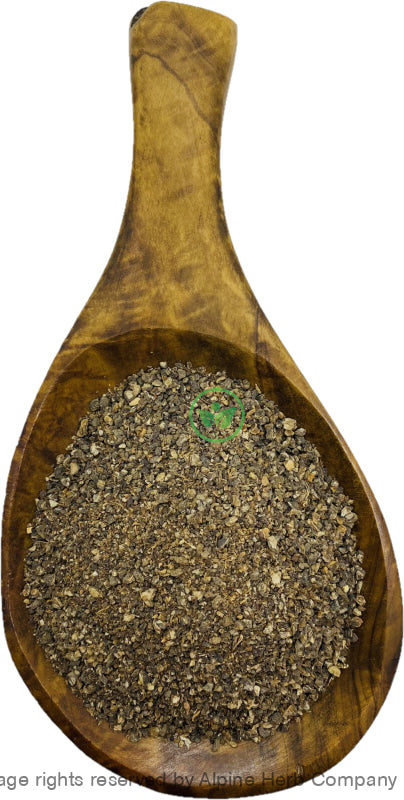Amla Fruit Cut – Indian Gooseberry Alpine Herb Company Inc.
$ 7,49 $ 4,49
Botanical Name: Emblica officinalis
Common Name:
- English: Indian gooseberry, Emblic myrobalan,Emblic
- Ayurvedic: Dhaatri, Dhaatriphala, Aamalaki
- Sanskrit: Aamalka, Amrutaphala
- Unani: Amlaj, Amla, Aamala
- Also, known as: Ambala, Kayasthaa, Amritphala, Aonla, Amlakhi, Amoghaa, Vrshya, Vayasyaa, Amlaku, Amlakhu, Amli, Bela nelli, Nellikkaai, Anvala, Nelli, Embali, Ainla, Aula, Usirika, Anala, Avalkaathi, Dhatri, Dhatriphala, Vayastha, Vrushya, Aamalaki, Amalaki, Amblabaum, Amla, Amla Berry, Aonla, Aovla, Arbre de Malacca, Arbre Myrobolan, Dhatriphala, Emblic, Emblica, Emblica officinalis, Emblic Myrobalan, Groseille à Maquereau Indienne, Groseille Indienne, Groseillier de Ceylan, Grosella de la India, Indian-Gooseberry, Mirobalano, Myrobalan Emblic, Mirobalanus embilica, Neli, Phyllanthus emblica, Yu Gan Zi
Origin: India
Harvested: Wild
Parts Used: Fruits
General Information:
For thousands of years, we come across the benefits and knowledge of Ayurveda. It is the science about restorative which started in India and now a day very popular and recognized throughout the globe as alternative medicine. The base of Ayurveda would be to increase the life span by focusing sources present in nature. And probably one of the most valuable fruits, as mentioned by Ayurveda, is definitely the Indian gooseberry, which we generally call ‘AMLA’.
Amla tree is deciduous and small to medium in size and grows up to 8 to 20 meters. Leaves are 8-10mm long and 2-3 mm wide. Leaves are light to pale green in colour. Ripening in autumn, the berries are harvested by hand after climbing to upper branches bearing the fruits. The taste of Indian Amla is sour, bitter and astringent, and it is quite fibrous. In India, it is common to eat Amla steeped in saltwater and red chilli powder to make the sour fruits palatable.
The use of Amla in Ayurvedic and folk medicines have been found for thousands of years.
Amla is widely used as a Rasayana (rejuvenative) and an important medicinal plant in Ayurveda. Its fruit pulp is used for rejuvenation purposes and anti-ageing properties.
It has potent immunomodulatory and antioxidant action, so Amla and its preparations are used in ayurvedic preventive medicines. Amalaki reduces free radicals in the body and provides a good amount of nutrients, especially Vitamin C. The fruit pulp of an Amla contains 20 times more Vitamin C content than an orange.
Amla is used in form of Fresh Amla Juice, Preserved Amla Juice, Amla Candy, Amla Churna, and Amla Fruit Pulp etc. Fresh Amla Juice, Fresh Amla Fruit Pulp and Amla Powder are good options to get all its therapeutic and nutritional benefits.
Medicinal parts of Amla are fruits, seeds, flowers, leaves and bark. The fresh fruit pulp is used in different ayurvedic preparations. The dried rind of fruits is ground to make powder and used as Amla Churna (Amla Powder).
How to use:
Decoctions are suitable for roots, barks, large seeds & berries, and other dense material. The simple way to make decoction is, in a saucepan, add 1 tablespoon of dried herbs to 1 cup of water. Bring the water to boil, reduce heat and simmer for 30-60 minutes. Strain and squeeze out as much as liquid as possible and enjoy it!
Tips:
- You can sweeten your herbal decoctions with a bit of honey, natural fruit juice, stevia leaves powder and or licorice root powder.
Precautions:
You should consult with a qualified healthcare practitioner before using any herbal products, particularly if you are pregnant, nursing, or on any medications.
All information on this website is for educational purpose ONLY
This information has not been evaluated by Health Canada.
This information is not intended to diagnose, treat, cure, or prevent any disease.
| Unit Size | 100g, 200g, 400g, 1kg |
|---|
Prompt shipping and expert packing
Thanks to our longstanding association with UPS FedEx DHL as well as other leading global carriers, we can offer a variety shipping options. Our warehouse staff is highly trained and will be able to pack your goods in accordance with our precise and exact specifications. Your items will go through an exhaustive examination before they will be securely packaged before being delivered. We ship to hundreds of thousands of customers daily in different countries. This is a sign of our determination to become the largest online retailer worldwide. Warehouses and distribution centers are located throughout Europe as well as in the USA.
Note that orders containing multiple items are processed according to the particular item.
We will thoroughly inspect all items ordered before shipping. Most orders are shipped within 48 hours. The delivery time will be between 3 and 7 working days.
Returns
The stock market is always changing. It's not entirely managed by us since we're involved with several entities, including the factory and the storage. Therefore, the actual inventory could fluctuate at any moment. Please be aware that it is possible that your order could be out of stock after you've placed your order.
Our policy lasts for 30 days. If it's been more than 30 days since the date you purchased your item We're sorry to say that we can't offer you a full exchange or refund.
You can only return a product if it is unused and still in the same state as when you received it. The item should be in the original packaging.


































